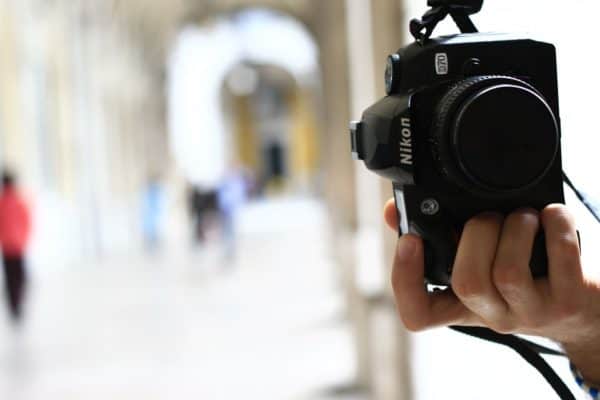Over the course of decades, technology has taken the ‘expertise’ out of the hands of photographic experts and made the pastime of taking photos widely available to the public. Polaroid cameras made pictures instantly available, and disposable cameras made it economically convenient to take a barrage of photos at a wedding, prom, family gathering, etc. Today, any person with a smartphone can become a novice photographer. We’ve undergone a photographic paradigm shift. Where will the unstoppable momentum go next?
DSLR Capable
A digital single-lens reflex camera is superior. Due to a thicker lens, the camera produces a sharper image, coveted by professionals and amateurs alike. However, until recently, the DSLR technology was too bulky to fit into the svelte insides of a smartphone. Manufacturer, LinX aspires to make a minute and cost-efficient smartphone camera that can rival any DSLR camera. So while those who invest in expensive cameras have validated the price tag, it’s going to get easier to achieve the same quality of photos with a conveniently-priced smartphone.
Superior Focus
Photographers in the past used experience to achieve focus, but today’s cameras target an image before a shot is taken. The ordeal enhances a picture by manipulating light, bringing it forward or backward. Technology aims to take the ordeal a step further by allowing photographers to reassess the focus after the picture is taken. Adding another wrinkle to the concept of retouching a photo, a photographer can retroactively change the resolution of captured images and reconfigure the focus.
Social Convenience
There is good and bad to be said about social media. One of the more convenient options is ‘tagging’ friends in pictures which allows the picture to show-up in that person’s timeline. Thanks to revelations in imaging recognition, you won’t have to wait to upload the images to your favorite social platform to tag. Images will be tagged in real-time and the related software will continue to be on the ‘lookout’ for similar pictures.
Sight in the Dark
Canon’s full-frame 35mm camera allows for full HD video in low-light conditions without the aid of infrared technology. Previously, to produce high-quality photos in the dark, a picture would feature black and white images. However, with this advancement, cameras may be adding a whole new colorful world to low-light conditions.
Light Photography
The Light L6 attracted many fans at a photographic event in Las Vegas. The folded optics design packs DSLR quality into a small body. The pocket-sized device has 16 lenses and each has 13 megapixels and multiple sensors, which allows for exposures at varied focal lengths. Oh yes, and if photography is not enough of a hobby, the camera shoots 4K video as well. Of course, you may want to edit your photos on the spot; the 5-inch touchscreen allows for easy editing.
Air Born
Of course, no photographer can ignore the impact drones have on the world of photography. Lily, a camera turned drone, comes with a GPS that allows for a photographic companion that can fly up to 50 feet. It records 1080p video and 12 MP stills. Sure, Aunt Martha can take the quality shots at a family wedding with her smartphone, but can she produce aerial shots of the entire event? Not unless she has a drone! Check out a variety of drones from Applioque and others at prophotouav.
Debatable Shift
The above technologies inspire a debate in the world of photography. While some embrace new technology and can’t wait to see what comes next, traditional photographers pine for a simpler time when specialized equipment and years of experience were required to produce amazing photos. Regardless of what side of the debate one is on, there is no stopping the advancement of technology. Like what ‘blogging’ did for writing, advancements small and cheap enough to be inserted in camera phones can make a photographer out of just about any person.
Is More Actually Less?
A blogger estimated that at least 2 to 3 trillion photos will be taken, uploaded, shared, and edited via apps and online software this year. On one hand, such a prolific feat could be celebrated and embraced by lovers of photography. On the other hand, will such a deluge of visions dilute the grandness of pictures? To put the numbers in another way, more pictures will be taken in one year than in the entire history of the analogue camera industry. Is it true that less is more or is the abundance of images good for artists, those who appreciate visual stimuli, and the camera industry?
Declan Kent has been interested in photography ever since college. and now works as a freelance wedding photographer. He enjoys street photography and exploring exotic new locations in his personal time, and can also be found online and in print with his articles on photography.
 Gearfuse Technology, Science, Culture & More
Gearfuse Technology, Science, Culture & More



